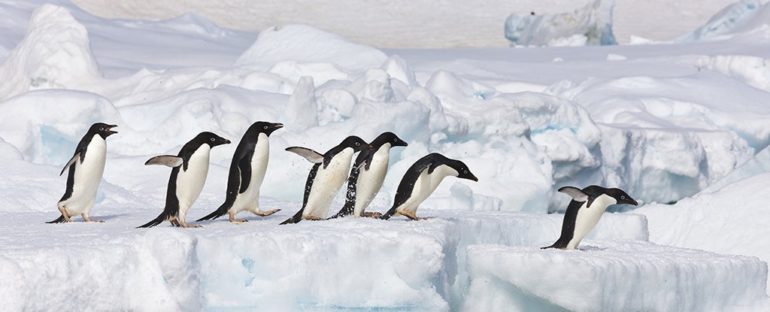Scientists have identified another major incoming shift in weather patterns caused by the pressures of climate change, predicting more rainfall along the coast of Antarctica, currently the driest continent on the planet.
Between now and 2100, the rain in Antarctica is projected to become more frequent and more intense, according to the new research. In total, we could be looking at an increase in rainfall of around 240 percent across the continent.
That will have an impact on the inhabitants of the icy wilderness – including emperor and Adélie penguin chicks, whose feathers aren’t waterproof. When wet weather is followed by cold and windy weather, these chicks can freeze to death.
“We expect not only more frequent rain events but also more intense rain events,” says atmospheric physicist Étienne Vignon from Sorbonne University in France.
Snow is much more common than rain in Antarctica, but it’s difficult to measure precipitation.
Antarctica is classed as a desert, and even snow falls rarely. This is partially due to a lack of weather fronts making it to the continent, and partially due to the very dry air. Rain falls mostly around the coast, with the eastern coast estimated to get around 4 days of rainfall per year, and the northwestern peninsula more than 50 days.
To get a more accurate look at rainfall, Vignon and his colleagues went through decades of observation reports from 10 stations on the continent, combining this with modeling and other data to come up with a pattern to estimate rainfall across Antarctica.
As well as estimating rainfall outside the scope of the weather stations, the so-called atmospheric re-analysis can be used to look into the future: Tested against the seven future scenarios put forward by the World Climate Research Programme, the simulation showed rainfall increasing every time.
“All and all, that rain will increase in a warming climate should be of no surprise to anyone, but the magnitude at which this occurs on such a cold continent is of interest,” says meteorologist Richard Bintanja from the University of Groningen in the Netherlands, who wasn’t involved in the study.
The threat to penguin communities is very real: Heavy rainfall in 2013-2014 caused the entire chick population to die in one of the biggest Adélie penguin colonies in southeast Antarctica. That’s more likely to happen again if rainfall increases.
That’s far from the only problem, too, as more rain also means more melting of the ice sheets, making an already dire situation even worse. Over the last few months, Antarctica has had the hottest summer heatwave on record.
Next, the researchers want to get some more accurate data. While all seven future climate models predicted higher amounts of rain for Antarctica, the actual amount of increase varied quite significantly.
“Given the expected increasing importance of rainfall for the Antarctic climate, those differences call for further attention to the evaluation and improvement of the representation of precipitation microphysics and phase in climate models over Antarctica,” the researchers write in their paper.
The research has been published in Geophysical Research Letters.



